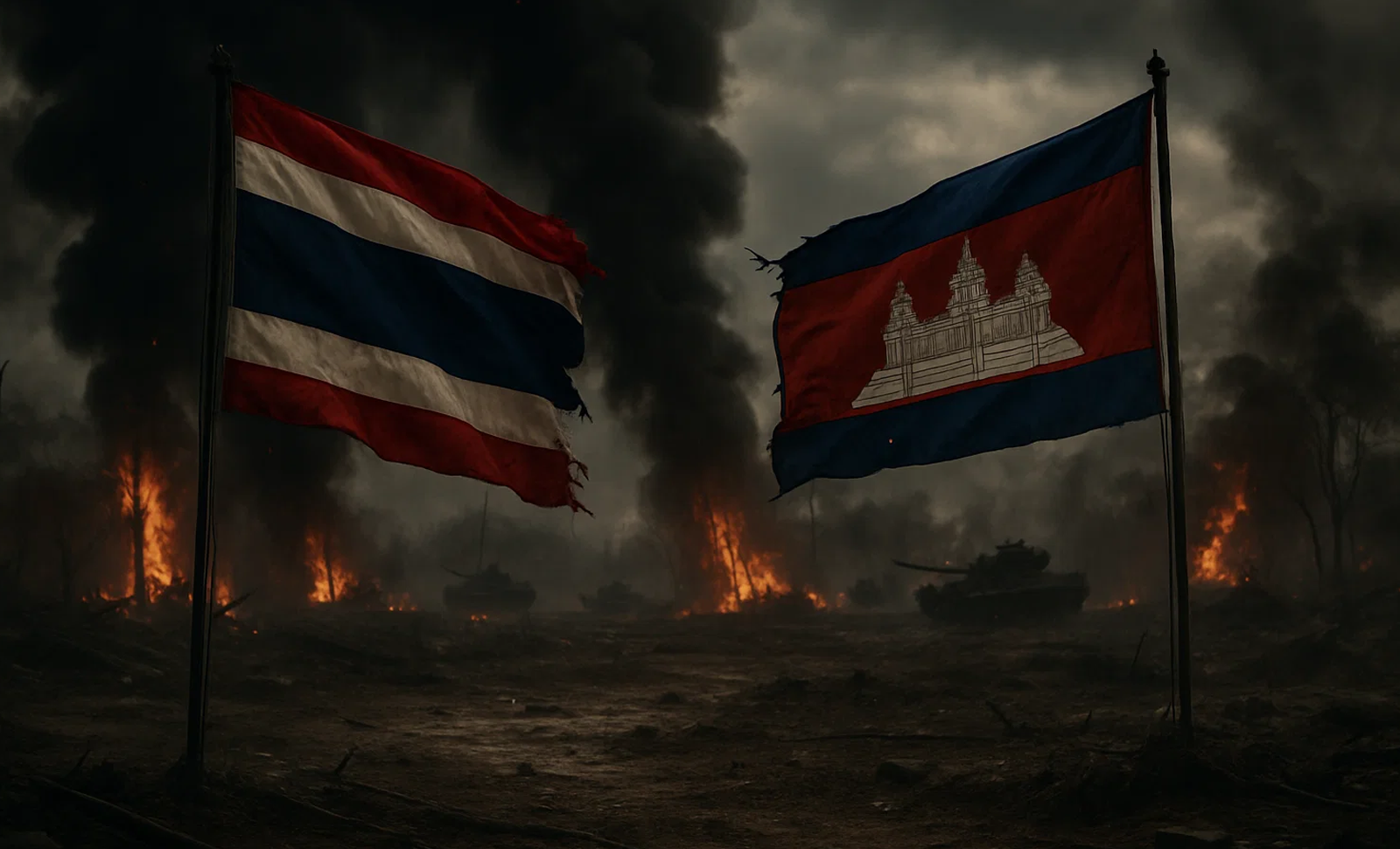A deadly skirmish broke out on July 24, 2025, between Thai and Cambodian forces along their long-disputed border, escalating into the worst confrontation between the two Southeast Asian neighbors in over a decade. The fighting began near the Ta Muen Thom temple complex, located in the Sisaket Province of Thailand and across from Cambodia’s Oddar Meanchey Province, an area historically fraught with territorial claims and nationalist tensions.
According to reports, the clash was triggered when Thai forces detected Cambodian troops and drones allegedly encroaching on Thai territory early in the morning. Shots were exchanged after what Thai authorities claimed was the first strike from the Cambodian side. The firefight spread to at least a dozen other points along the nearly 800-kilometer border, intensifying fears of a broader military conflict. By the end of the fifth day, the violence had claimed over 34 lives, with both sides suffering civilian and military casualties. Thailand reported at least 21 deaths (including 13 civilians), while Cambodia confirmed the loss of 13 lives (including 8 civilians). An estimated 270,000 people were displaced from their homes, with both countries experiencing major humanitarian strain in affected regions.
The roots of the conflict stretch back decades, with particular flashpoints like Preah Vihear and Ta Muen Thom temple areas remaining unresolved despite international arbitration and agreements. Tensions were reignited earlier this year when Cambodian worshippers were reportedly barred from singing their national anthem at Ta Muen Thom in February. Matters escalated further on May 27, when a clash at Chang Bok left one Cambodian soldier dead. Thailand accused Cambodia of laying landmines that injured its soldiers, while Cambodia denied any such involvement. A leaked phone conversation in June between Cambodia’s former Prime Minister Hun Sen and Thailand’s suspended leader Paetongtarn Shinawatra further soured diplomatic relations, with many in Thailand interpreting the call as Cambodian interference in domestic politics.
The ongoing hostilities prompted urgent international intervention. As the 2025 ASEAN Chair, Malaysia hosted emergency mediation talks in Putrajaya on July 28. Present at the high-level meeting were Cambodia’s Prime Minister Hun Manet, acting Thai Prime Minister Phumtham Wechayachai, Malaysian PM Anwar Ibrahim, and representatives from China and the United States. Following over two hours of discussions, Anwar announced that both nations had agreed to an “immediate and unconditional ceasefire”, effective from midnight local time. Malaysia also proposed the formation of a joint observer group to monitor compliance and reduce mistrust along the border.
During a press conference, Anwar Ibrahim said, “This is a vital first step toward peace and de-escalation. ASEAN remains committed to regional stability.” Cambodian PM Hun Manet echoed the sentiment, calling the outcome of the talks “very good” and expressing hope that the fighting “would stop immediately.” Meanwhile, Thailand’s Phumtham Wechayachai voiced cautious optimism, affirming his country’s intent to uphold the ceasefire “in good faith,” though he cast doubts on Cambodia’s sincerity, reflecting the deep mistrust that persists between the two governments.
International voices also weighed in. Former U.S. President Donald Trump, currently campaigning for re-election, issued a warning on Truth Social threatening to impose up to 36% tariffs and suspend trade deals with both nations if the conflict continued. This public statement, though controversial, is believed to have increased pressure on the two countries to reach a resolution.
Despite the ceasefire agreement, analysts warn that the underlying issues remain unresolved. The border dispute, fueled by nationalism, history, and competing territorial claims, is far from settled. Both sides agreed to resume military-level discussions on July 29, followed by a bilateral border committee meeting scheduled for August 4 in Cambodia. These talks aim to establish clearer demarcation lines and confidence-building measures to avoid future escalations.
While the ceasefire brings temporary relief to thousands affected by the violence, the fragile truce underscores the need for a long-term diplomatic solution. Without it, the cycle of tension and violence along the Thai-Cambodian border may continue to repeat, threatening regional peace and ASEAN unity.















